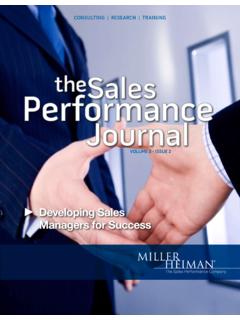Transcription of CONSIDERATIONS IN DEVELOPING A PAID TIME …
1 Box 703. Pomona, NY 10970. Phone: 845-362-3445. Fax: 845-362-2179. Website: CONSIDERATIONS IN DEVELOPING A paid TIME-OFF POLICY. by LENA BODIN, MBA, SPHR. According to various statistics, each year, eligible employees are rewarded with a combination of various paid time off benefits. However, according to surveys by the Society for Human Resource Management (SHRM), sick days, personal days, vacation days all are on a decline. Some companies are offering fewer of these days off, while others are bundling them and calling the new package " paid time off" or PTO. In this plan, the worker usually loses some days, but gains some flexibility since the reason for time off isn't specified as done in traditional policies. paid time-off is a voluntary benefit that organizations offer to employees to give them down time and a chance to deal with non-work issues.
2 There are no federal regulations requiring employers to provide vacation days, holidays or sick days, etc., but it has become common business practice to do so despite the high costs associated with these employee-friendly benefits in order for companies to be competitive in their talent attraction and retention strategies. The traditional paid time-off policies include: 1. Vacation 2. Holidays / Personal Days 3. Birthday 4. Sick Leave 5. Bereavement Leave Many companies also provide paid time-off for jury duty. Military leave is not part of the paid time-off repertoire since military leave is not a paid leave, although some companies may chose to have the employee use his or her vacation time or personal time-off to cover their military leave. Vacation Usually granted based on years of service and level in the company with benefits increasing with years and higher levels.
3 Normally 1 to 2 weeks for the first five years of service, then an additional week added with each 5 years of service. Traditionally, in many instances, after 20 years of service a company may offer 5-weeks of vacation although this is becoming less and less common with the maximum number being capped at 4 weeks. Reprints by permission only. For more information, please contact Lena Bodin at 845-362-3445 or email her at Website: Page 1 of 5. Box 703. Pomona, NY 10970. Phone: 845-362-3445. Fax: 845-362-2179. Website: According to a recent survey conducted by SHRM whose results are based on responses from 606 SHRM members the following statistics was obtained: Years of service Average days per year Less than 1 year 1 year of service 2 years of service 3 years of service 4 years of service 5 years of service 6 years of service 7 years of service 8 years of service 9 years of service 10 years of service 11 years of service 12 years of service 13 years of service 14 years of service 15 years of service More than 15 years of service Source: Society for Human Resource Management, 2000 SHRM Benefits Survey.
4 Holidays, Floating Holidays and Personal Days Usually based on legal public holidays and could be anywhere from 8 to 12 days total between the different types. Typically, includes: New Year's day; Memorial Day;. Independence Day: Labor Day; Thanksgiving and Christmas Day with the other days allowed as personal and/or floating holidays. For public service companies the tendency is to have all legal public holidays observed including any state and local holidays for state and local entities. Reprints by permission only. For more information, please contact Lena Bodin at 845-362-3445 or email her at Website: Page 2 of 5. Box 703. Pomona, NY 10970. Phone: 845-362-3445. Fax: 845-362-2179. Website: Legal public holidays include the following days: New Year's Day, January 1. Martin Luther King, Jr. Day, the third Monday in January Washington's Birthday, the third Monday in February Memorial Day, the last Monday in May Independence Day, July 4.
5 Labor Day, the first Monday in September Columbus Day, the second Monday in October Veterans Day, November 11. Thanksgiving Day, the fourth Thursday in November Christmas Day, December 25. Another use of personal days or floating holidays might be for religious holidays that are not scheduled days off for the company. Since it is unlawful to prevent an employee from taking time off in observance of religious holidays, employers may want to allow time off, without pay if the employee has exhausted all paid time off. Birthday Some companies may allow this day as a paid day off, mostly for union and hourly workers or those with a low maximum salary level. Sick Leave This could be anywhere from 3 to 8 days annually. Many companies have a use it or lose it . provision while some companies, especially under a bargaining contract, will pay out the unused days at the end of year.
6 Many companies may allow the employee to carry over unused leave to bank in their disability leave or long-term sick leave bank. Care must be given to coordinate sick leave benefits with some mandatory benefits such as disability and FMLA. Bereavement Leave May number anywhere from 1 to 3 days for the death of an immediate family member and a shorter benefit for close relatives. SHRM's 2000 Benefits Survey shows that 91 percent of respondents offer paid bereavement leave, and that large employers are more likely to offer such benefits than smaller ones. TOTAL ANNUAL DAYS OFF. Nationally, the average full-time worker at a private company gets 14 days of paid time off each year, according to Ryan Johnson, public affairs manager of the nonprofit research Reprints by permission only. For more information, please contact Lena Bodin at 845-362-3445 or email her at Website: Page 3 of 5.
7 Box 703. Pomona, NY 10970. Phone: 845-362-3445. Fax: 845-362-2179. Website: organization WorldatWork, which surveyed 822 private companies of all sizes, across all industries, with union and nonunion workers. Those 14 days include sick time, vacation, personal leave and all other forms of paid time off. According to SHRM's survey average number of total paid days off in the United States were: Average days per Years of service year Less than 1 year 1 year of service 2 years of service 3 years of service 4 years of service 5 years of service 6 years of service 7 years of service 8 years of service 9 years of service 10 years of service 11 years of service 12 years of service 13 years of service 14 years of service 15 years of service More than 15 years Source: Society for Human Resource Management, 2000 SHRM Benefits Survey. A paid TIME OFF POLICY (PTO).
8 Many companies are switching from the traditional paid time-off to offer a single or "comprehensive" paid time-off (PTO) policy that provides a specific amount of paid leave intended for employees to use for a variety of purposes. The benefits of a single paid time- Reprints by permission only. For more information, please contact Lena Bodin at 845-362-3445 or email her at Website: Page 4 of 5. Box 703. Pomona, NY 10970. Phone: 845-362-3445. Fax: 845-362-2179. Website: off policy include: Increased productivity with fewer unscheduled absences;. Enhanced employee morale with more flexibility and responsibility. Employees like the idea of being able to choose how to use their PTO. paid Time-Off (PTO). is an all-purpose time-off policy for eligible employees to use for vacation, illness or injury, and personal business. It combines traditional vacation and sick leave plans into one flexible, paid time-off policy.
9 The amount of PTO employees receive each year increases with the length of their employment with a company and can be simplified into the following formula. Upon initial eligibility the employee is entitled to 15 PTO days each year;. After 5 years of eligible service the employee is entitled to 20 PTO days each year;. After 10 or more years of eligible service the employee is entitled to 25 PTO days each year. However, care must be given when considering switching from a traditional paid time-off policy to the flexible PTO so that people don't lose too many days under the new program. Consideration must also be given on how to handle unused days and whether to allow some or all of it to be carried over. This is particularly important, for example, how to handle the PTO policy if the company has traditionally paid out unused sick days or allowed carryover of unused sick days and maybe even allowed carryover of some vacation days, etc.
10 Whichever way your company chooses to go with your paid time-off policy, the most important step is to have an established policy which is clearly communicated to all employees. The logical thing is to have it included in your company Employee Handbook. DEVELOPING your policy needs to be coordinated with your other policies such as State Disability, Short Term Disability and, if applicable, FMLA. If you don't have the expertise in- house, you should consider working with a consultant or consulting firm to help you develop your program. **. Lena Bodin is the President of People Resource Strategies ( PRS ), a professional consulting firm with twenty years of senior level experience in business operations and human resources. PRS specializes in helping clients achieve bottom-line results through comprehensive programs designed for improving employee performance and organizational effectiveness.







